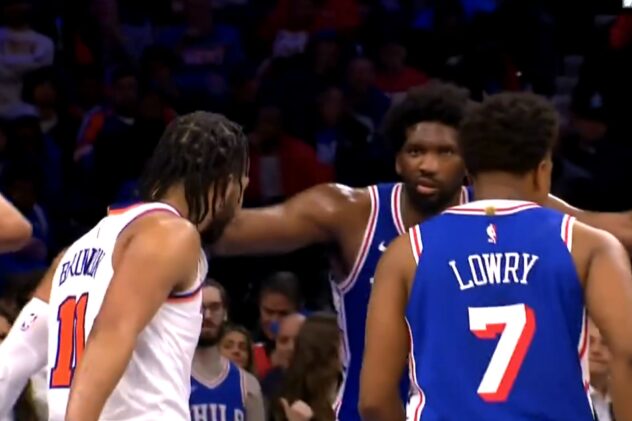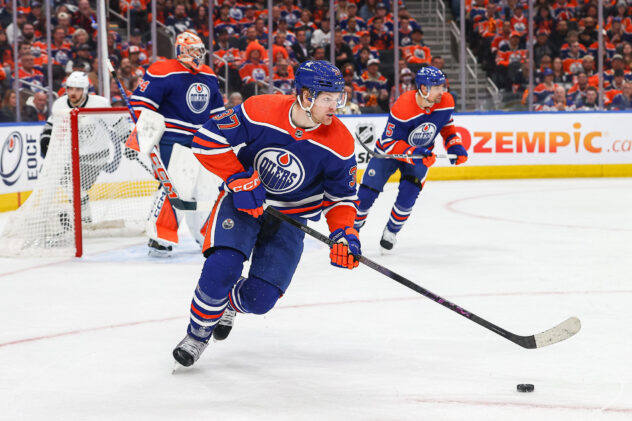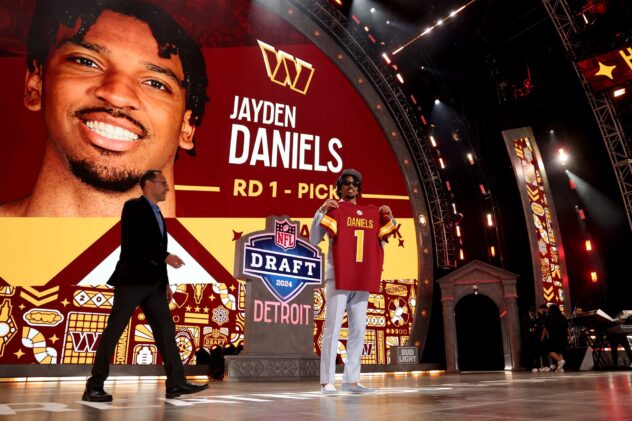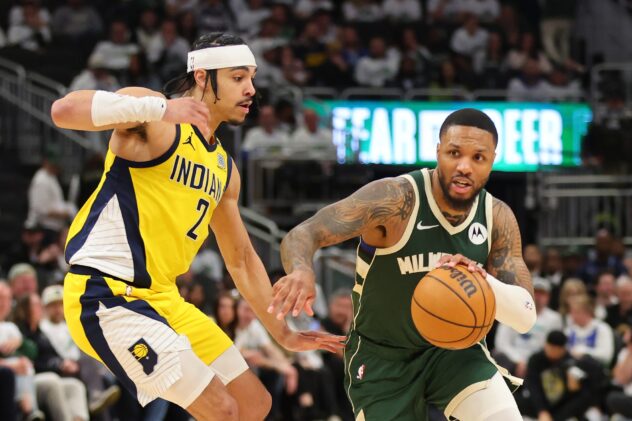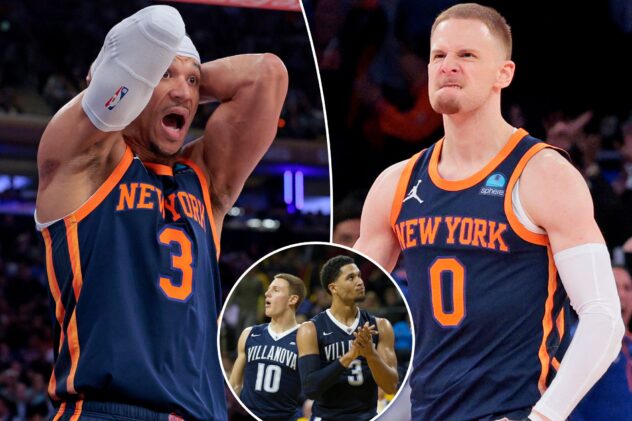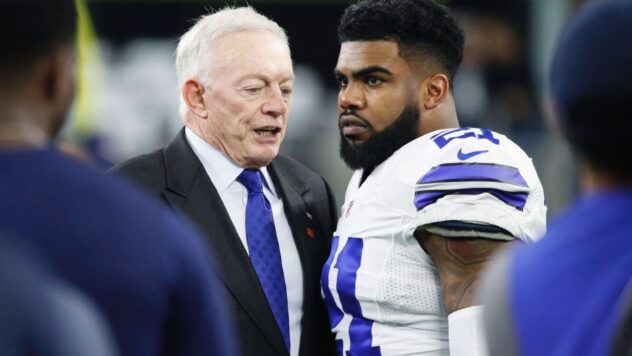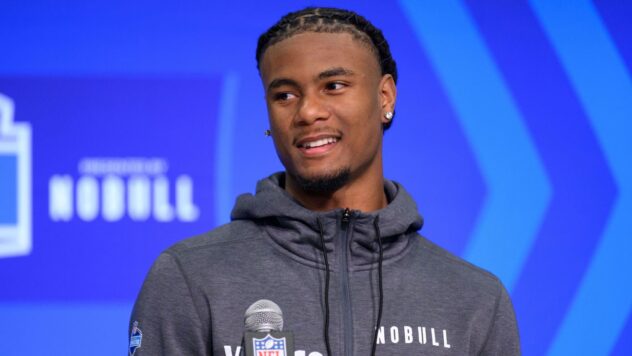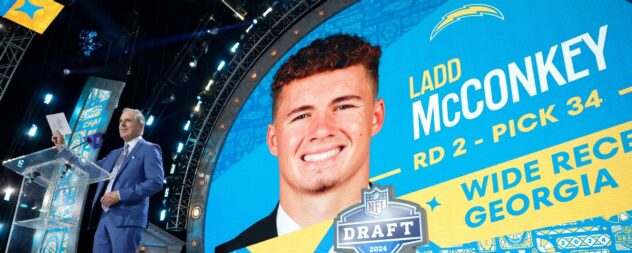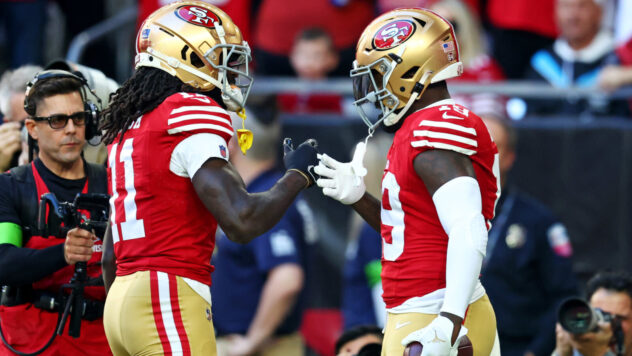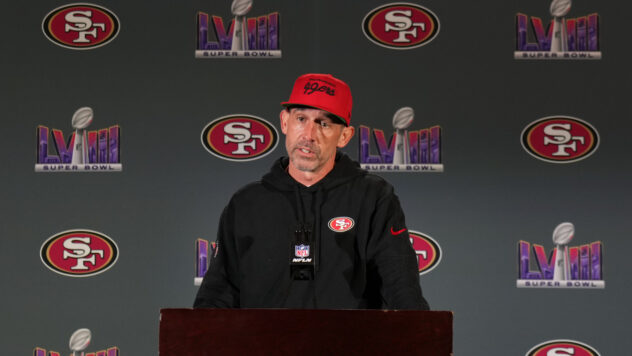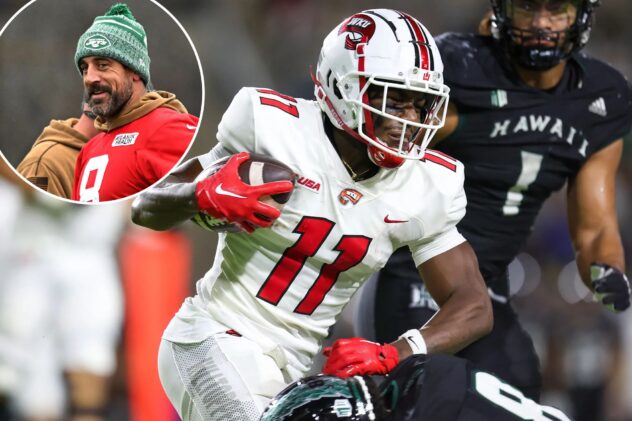The NFL’s Star-Vs.-System Super Bowl
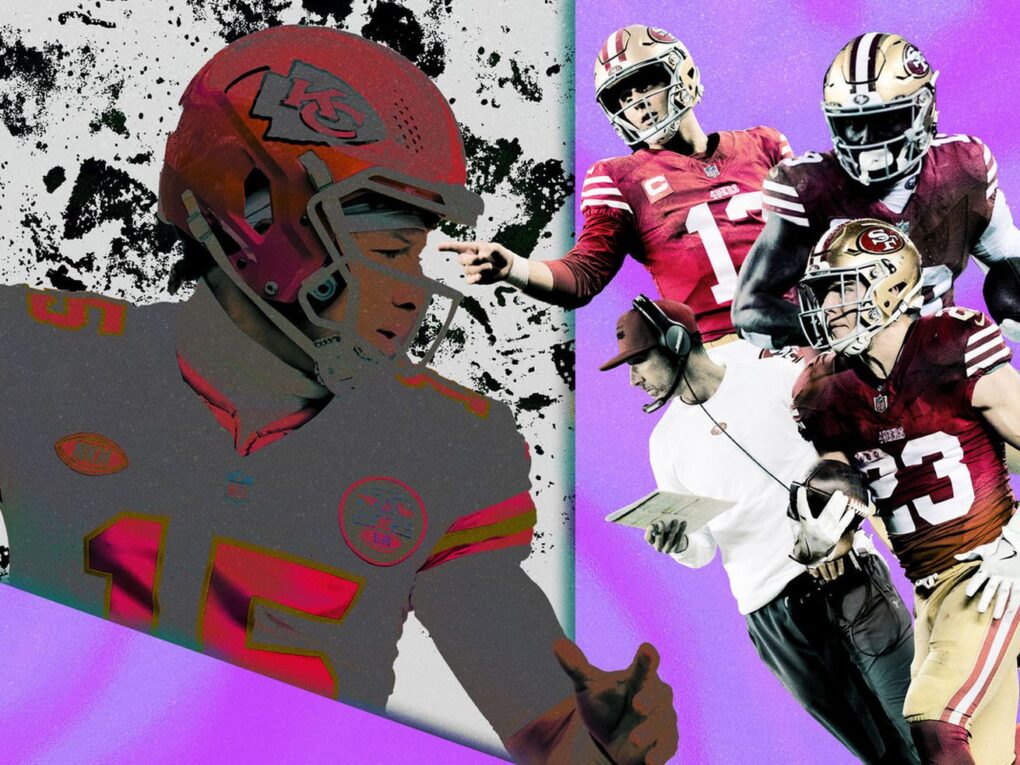
The Kansas City Chiefs have an offense that revolves around Patrick Mahomes. The San Francisco 49ers have one that centers Kyle Shanahan’s system and skill-position talent above all else. Which will win out on Sunday and show what’s most important in today’s NFL?
This Super Bowl is a battle of two offenses on opposite ends of the football spectrum. On one side, there’s the brilliantly designed San Francisco 49ers unit, constructed by the NFL’s most impressive offensive mind and executed by the league’s most extensive collection of game-breaking talent. On the other, there’s a Kansas City Chiefs group that revolves almost entirely around its quarterback. That’s not an insult to Andy Reid or Travis Kelce, by the way. Earth is a first-ballot Hall of Fame planet as far as I’m concerned, but it still revolves around the sun.
Take Patrick Mahomes out of the equation, and it’s clear which offensive setup is preferable. We’ve seen other seemingly all-powerful quarterbacks buckle under the weight that Mahomes shoulders: Josh Allen hasn’t sniffed a Super Bowl, Lamar Jackson is in the same boat, and Justin Herbert hasn’t even won a playoff game. There may be several elite quarterbacks in this league, but Mahomes stands alone.
You can say the same about San Francisco’s supporting cast. Oh, you have Tyreek Hill and Jaylen Waddle? Where’s your All-Pro tight end and all-everything running back to go along with them? Is this how the other half lives? Can’t relate.
Really, neither of these offenses can be considered a realistic model for constructing a unit: There aren’t any other Mahomeses out there, and “fill your skill group with star talent and then find a talented quarterback in the seventh round” is not actionable or insightful advice. But there is plenty to learn from these two teams, which have set the standard for others looking to find paths to contention. And while the outcome of Sunday’s Super Bowl may not change how teams balance their offenses going forward, it could be a referendum on which method, when executed at the highest level, works best.
Kyle Shanahan’s offense constantly evolves to fit his personnel and combat the popular defensive trends of the day. But even as the scheme changes, its foundation remains the same: timing and precision.
Shanahan is famously a stickler for details, and having played receiver at the University of Texas before becoming a coach, he might be harder on that position than any other. Last year, Deebo Samuel said that early in his career, he wore a dark visor to hide his frustration whenever his coach got on him for seemingly inconsequential mistakes. Later, though, he realized that Shanahan’s tough coaching served a purpose.
Kyle Shanahan yelled at rookie Deebo Samuel so much over play details that Deebo wore a dark visor to practice so Kyle couldn’t see Deebo cursing his coach out under his breath. Here’s how they grew close out of that. All this and more on tonight’s SND. pic.twitter.com/Pajglrw7GP
— Kevin Clark (@bykevinclark) February 8, 2023
Shanahan wasn’t being a hard-ass just to establish authority over his players; he was doing it because running a route in the exact way he drew up could be the difference between a nice gain and, say, a 48-yard touchdown.
DEEBO BREAKS A TACKLE AND GOES ALL THE WAY
: #SFvsPHI on FOX
: Stream on #NFLPlus https://t.co/xvCjbLUIcN pic.twitter.com/4oGKuQ5DMD— NFL (@NFL) December 3, 2023
“I’ll pause [the film on a play like that], and I’ll be like, ‘My goal in life is to get Deebo right here in this situation,” Shanahan said in December while discussing the play above. “I say it sarcastically, but it’s also kind of true.” It’s not always Samuel—sometimes, it’s Brandon Aiyuk or George Kittle or Christian McCaffrey or even Jauan Jennings—but the idea is always the same: Get the right player the ball at the right spot on the field, and good things will happen. Shanahan will handle the tactics; the players just need to follow his instructions, and the rest will take care of itself. That’s as true for a wideout as it is for a quarterback.
The Chiefs do things a bit differently. Kansas City’s passing game does benefit from Reid’s creative play designs, but the players have more input on how the offense operates. That hasn’t always been the case with Reid, who’s been calling plays since the late 1990s. But when you have a quarterback like Mahomes, you let him cook. Reid lets Mahomes change plays before the snap—even on key third downs. He also attaches a quick pass option to nearly all the team’s runs, so if Mahomes thinks the defense is loading up against the run, he can throw a screen pass to the perimeter. Reid may be calling the plays, but Mahomes has final say at the line.
With Mahomes now locked in as Kansas City’s long-term franchise quarterback—having signed a $500 million deal last year—Reid has provided his star with even more freedom to make adjustments as he sees fit. In return, the 28-year-old has not abused the privilege afforded to him by the veteran coach. This exchange is largely made possible by the trust the two have formed over their seven years together, but some of it has been born out of necessity this season. The Chiefs front office has pushed a lot of its resources to the defense in the past few years, off-loading some of Mahomes’s pass catchers to stack the other side of the ball. That’s made Mahomes’s job as a quarterback more difficult—but Kansas City knows he can handle that burden.
Chiefs execs didn’t set out to build an offense that required their quarterback to play at a near-perfect clip to win a Super Bowl. This isn’t the result of planned obsolescence. But general manager Brett Veach says he started budgeting for Mahomes’s current contract in 2018. The most notable cost-cutting measure was the Hill trade in 2022, which looks like an L given the state of Kansas City’s receiver room. But that ultimately brought Trent McDuffie, Chamarri Conner, and Joshua Williams to the secondary and created enough cap space for the Chiefs to pay Chris Jones earlier this season. Kansas City moved on from the league’s most productive receiver and improved overall.
The team as a whole may be better off after the Hill trade, but the lack of receiving help has put Mahomes on something of an island this season. Only two quarterbacks lost more expected points added (48.6) due to receiver error this season, per TruMedia. As a result, the 2023 campaign has been comfortably the worst of Mahomes’s career. He finished outside the top 10 in EPA per dropback for the first time since taking over the starting job. Take out the 2019 season, when Mahomes missed some games with a knee injury, and he’s set career lows in passing yards, touchdowns, and passer rating. He’s not putting up the monster numbers we’re used to seeing out of the Chiefs superstar, but that’s a trade-off Mahomes has had to make to get his team in position to win another Super Bowl. With a top-five defense and a mediocre offense, the Chiefs didn’t need Mahomes to throw for 5,000 yards or 50 touchdowns, as he did in his first season as the starter, when the defense gave up 26.3 points a game.
Brock Purdy hasn’t had to make that sacrifice. The second-year passer is surrounded by a cushy environment that’s allowed him to test the limits of his game without tarnishing his stat line. Compare his and Mahomes’s respective postseason performances so far. Mahomes has objectively been the better quarterback. He hasn’t thrown an interception in the postseason, and per Pro Football Focus, he hasn’t even registered a turnover-worthy play. He’s taken only two sacks, both coming in the AFC championship win over Baltimore, on 112 dropbacks (1.8 percent). He’s been off target just 6.8 percent of the time, per TruMedia. Perfect quarterback play is an unrealistic goal—a carrot on a stick—but Mahomes has gotten pretty damn close during this Super Bowl run. Purdy, on the other hand, has thrown one interception and would have a few more on his ledger if not for drops by Packers and Lions defensive backs. He’s been off target on 20 percent of his postseason attempts. He’s taken three sacks on 77 dropbacks (3.9 percent). Purdy has certainly also made winning plays in crunch time in both playoff wins—helping him beat any and all game manager allegations—but he’s been straight-up volatile, while Mahomes has been remarkably consistent. Yet their respective box score numbers suggest that the Niners quarterback has been better.
Purdy’s taking full advantage of the privilege afforded to him by his offense, stretching his game in ways Mahomes can’t afford to without jeopardizing his team’s season. The second-year pro has an average depth of target (8.5) nearly 2 yards higher than Mahomes’s (6.7). A smaller percentage of his passing yards have come after the catch, so he’s pushing it downfield. And PFF has credited him with five “big-time throws,” which ties him with Mahomes even though Purdy has played one fewer game.
The numbers suggest that Purdy is doing more heavy lifting for his offense compared to Mahomes, but anyone who’s been watching the playoffs knows that isn’t the case. Chiefs defensive coordinator Steve Spagnuolo has gone out of his way to praise Purdy this week. He’s called him “the real deal” and noted his ability to scramble as a genuine concern for his defense. But he also didn’t hesitate when asked on Monday what his main concern was when facing the 49ers offense: “All the weapons they have.”
Spagnuolo’s answer says more about the depth of offensive talent on San Francisco’s roster than it does about Purdy, and the fact that the 49ers defensive players have singled out Mahomes as the primary threat out of Kansas City says more about him than it does about some of the other key contributors to the Chiefs offense. Still, San Francisco’s talent, along with Shanahan’s dynamic scheme, has allowed the quarterback to get away with a more cavalier style. Mahomes hasn’t enjoyed that luxury this season. His surroundings have forced him into almost a game-managing role, which he’s embraced and nearly perfected this season.
This Chiefs team proves that a decently balanced roster—featuring a top quarterback— can be just as dominant as one carried by a fire-breathing offense. The 49ers prove that a fire-breathing offense can bolster a quarterback who has some growing to do in his game. Sunday’s Super Bowl will pit the two against each other—the Chiefs offense and its leading man will take on the 49ers offense and its endlessly talented ensemble cast. Only one will be good enough to hoist the Lombardi Trophy.

